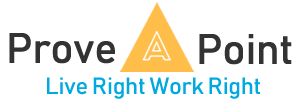These days, new project managers are exposed to conflicting guidance. On the one hand, there is a plethora of traditional “Plan the work, work the plan” literature. On the other, media is full of light-touch, self-organizing team advice. These sets of recommendations often appear to be at odds, so what is the new PM to do? Consultants will say, “Oh, it depends…” and start a lengthy (aka expensive) conversation. I say let’s examine the basics so we can make an informed decision ourselves.
The goals of planning, scheduling and tracking are universal. We need to understand what work needs to be completed, determine a good way to do it, then make sure it happens while making adjustments as new information emerges. However, in the last 30 years, we have started tackling more projects with higher degrees of uncertainty and change. These characteristics help us determine if we should use traditional, predictive approaches or rely more on newer, adaptive techniques.
When our projects undertake defined, repeatable work using technologies and approaches our organizations have experience in, then uncertainty and change rates are typically low and manageable. Here, traditional project management approaches work great. It is safe and effective to use Gantt charts, detailed work breakdown structures (WBS), network diagrams and earned value analysis.…
Please log in or sign up below to read the rest of the article.
ADVERTISEMENT
Published at Wed, 09 Jan 2019 05:00:00 +0000





